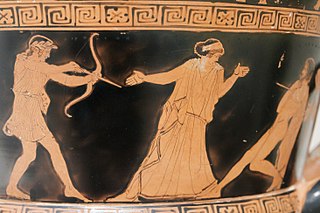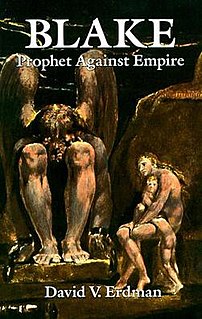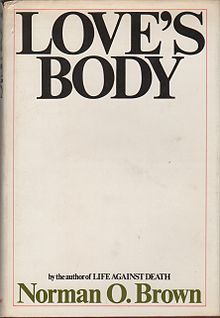
William Blake was an English poet, painter, and printmaker. Largely unrecognised during his lifetime, Blake is now considered a seminal figure in the history of the poetry and visual arts of the Romantic Age. What he called his prophetic works were said by 20th-century critic Northrop Frye to form "what is in proportion to its merits the least read body of poetry in the English language". His visual artistry led 21st-century critic Jonathan Jones to proclaim him "far and away the greatest artist Britain has ever produced". In 2002, Blake was placed at number 38 in the BBC's poll of the 100 Greatest Britons. While he lived in London his entire life, except for three years spent in Felpham, he produced a diverse and symbolically rich œuvre, which embraced the imagination as "the body of God" or "human existence itself".

The Golden Bough: A Study in Comparative Religion is a wide-ranging, comparative study of mythology and religion, written by the Scottish anthropologist Sir James George Frazer. The Golden Bough was first published in two volumes in 1890; in three volumes in 1900; and in twelve volumes in the third edition, published 1906–15. It has also been published in several different one-volume abridgments. The work was aimed at a wide literate audience raised on tales as told in such publications as Thomas Bulfinch's The Age of Fable, or Stories of Gods and Heroes (1855). The influence of The Golden Bough on contemporary European literature and thought was substantial.

Herman Northrop Frye was a Canadian literary critic and literary theorist, considered one of the most influential of the 20th century.
Fearful Symmetry is a phrase from William Blake's poem "The Tyger". It has been used as the name of a number of other works:

Sexual Personae: Art and Decadence from Nefertiti to Emily Dickinson is a 1990 work about sexual decadence in Western literature and the visual arts by scholar Camille Paglia, in which the author addresses major artists and writers such as Donatello, Sandro Botticelli, Leonardo da Vinci, Edmund Spenser, William Shakespeare, Johann Wolfgang von Goethe, Samuel Taylor Coleridge, Lord Byron, Emily Brontë, and Oscar Wilde. Following Nietzsche, Paglia argues that the primary conflict in Western culture is between the binary forces of the Apollonian and Dionysian, Apollo being associated with order and symmetry, and Dionysus with chaos, disorder, and nature. The book received critical reviews from numerous feminist scholars, but was praised by some literary critics.

In the mythological writings of William Blake, Fuzon is the fourth and final son of Urizen, associated with the classical element of fire. In The Book of Ahania he fights Urizen for control of the world.

The prophetic books of the 18th-century English poet and artist William Blake are a series of lengthy, interrelated poetic works drawing upon Blake's own personal mythology. They have been described as forming "what is in proportion to its merits the least read body of poetry in the English language". While Blake worked as a commercial illustrator, these books were ones that he produced, with his own engravings, as an extended and largely private project.

The Spectre is one aspect of the fourfold nature of the human psyche along with Humanity, Emanation and Shadow that William Blake used to explore his spiritual mythology throughout his poetry and art. As one of Blake's elements of the psyche, Spectre takes on symbolic meaning when referred to throughout his poems. According to professor Joseph Hogan, "Spectre functions to define individuals from others [...] When it is separated [from Emanation], it is reason, trying to define everything in terms of unchanging essences." Thus, according to Samuel Foster Damon, Spectre epitomizes "Reason separated from humanity" and "Self-centered selfhood" or, as Alexander S. Gourlay puts it, Spectre is "characterized by self-defensive rationalization".
Tiriel is the eponymous character in a poem by William Blake written c.1789, and considered the first of his prophetic books. The character of Tiriel is often interpreted as a foreshadowing of Urizen, representative of conventionality and conformity, and one of the major characters in Blake's as yet unrealised mythological system.

The Apollonian and Dionysian is a philosophical and literary concept and dichotomy/dialectic, based on Apollo and Dionysus in Greek mythology. Some Western philosophical and literary figures have invoked this dichotomy in critical and creative works, most notably Friedrich Nietzsche and later followers.

Vala, or The Four Zoas refers to one of the uncompleted prophetic books by the English poet William Blake, begun in 1797. The titular main characters of the book are the Four Zoas, who were created by the fall of Albion in Blake's mythology. It consists of nine books, referred to as "nights". These outline the interactions of the Zoas, their fallen forms and their Emanations. Blake intended the book to be a summation of his mythic universe but, dissatisfied, he abandoned the effort in 1807, leaving the poem in a rough draft and its engraving unfinished. The text of the poem was first published, in 1893, by the Irish poet W. B. Yeats and his fellow collaborator, the English writer and poet Edwin John Ellis, in their three-volume commentary book about William Blake's works, The Works of William Blake: Poetic, Symbolic and Critical.

Nebuchadnezzar is a colour monotype print with additions in ink and watercolour portraying the Old Testament Babylonian king Nebuchadnezzar II by the English poet, painter and printmaker William Blake. Taken from the Book of Daniel, the legend of Nebuchadnezzar tells of a ruler who through hubris lost his mind and was reduced to animalistic madness and eating "grass as oxen".

The Book of Los is a 1795 prophetic book by the English poet and painter William Blake. It exists in only one copy, now held by The British Museum. The book is related to the Book of Urizen and to the Continental prophecies; it is essentially a retelling of Urizen from the point of view of Los. The book has been described as a rewriting of the ancient myth of creation that equates Fall with the loss of spiritual vision brought about by selfhood.

The continental prophecies is a group of illuminated books by William Blake that have been subject of numerous studies due to their recurrent and unorthodox use of political, literary and sexual metaphors. They consist of America, Europe and The Song of Los.

Blake: Prophet Against Empire: A Poet's Interpretation of the History of His Own Times is a 1954 biography by David V. Erdman whose subject is the life and work of English poet and painter William Blake.

Camille Anna Paglia is an American feminist academic and social critic. Paglia has been a professor at the University of the Arts in Philadelphia, Pennsylvania, since 1984. She is critical of many aspects of modern culture and is the author of Sexual Personae: Art and Decadence from Nefertiti to Emily Dickinson (1990) and other books. She is also a critic of contemporary American feminism and of post-structuralism, as well as a commentator on multiple aspects of American culture such as its visual art, music, and film history.
The project of producing a scholarly, uniform edition of the Collected Works of Northrop Frye (1912–1991) grew from modest beginnings in 1993; the project has been funded by grants from the Michael G. DeGroote family through McMaster University, from the Social Sciences and Humanities Research Council of Canada, and from Victoria University, University of Toronto. The project is under the general editorship of Alvin A. Lee, with day-to-day operations supervised by associate editor Jean O'Grady, aided by editorial assistant Margaret Burgess and others.

Love's Body is a 1966 book by the American classicist Norman O. Brown.

The Origins and History of Consciousness is a 1949 book by the psychologist and philosopher Erich Neumann, in which the author attempts to "outline the archetypal stages in the development of consciousness". It was first published in English in 1954 in a translation by R. F. C. Hull. The work has been seen as an important and enduring contribution to Jungian thought, but has been criticized for using evidence in misleading ways and making untenable assumptions.

Foucault is a book about the French intellectual Michel Foucault by the Brazilian critic and sociologist José Guilherme Merquior, in which the author provides a critical evaluation of Foucault and his works, including Madness and Civilization (1961) and The History of Sexuality (1976). Foucault received praise from several scholars.

















